

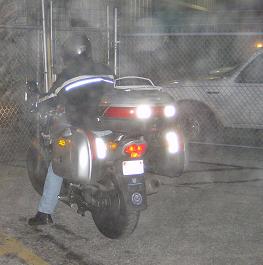
Arriving at the airport on a dark, wet, foggy morning. I'm scheduled to report for duty for this run at 0500, so I have to get up at 0300 in order to be out the door and on my way by 0400. (It takes almost an hour to ride to our principal operations base from our home in a rural part of northeast central Florida.)
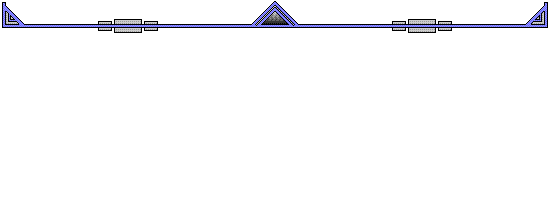

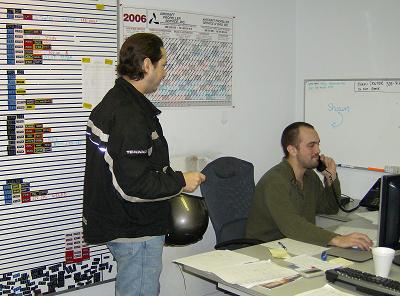


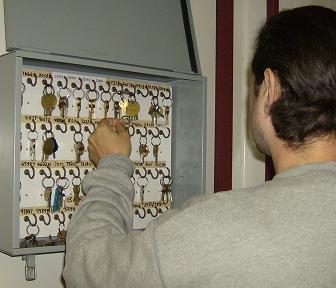


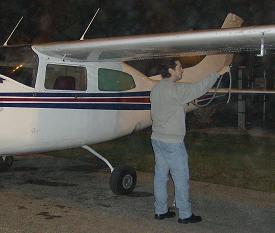
Untying and preflighting the airplane, a Cessna 210 Centurion. 210s are very good airplanes for hauling light cargo. They can hold one normal-sized adult pilot and five hours of fuel plus a thousand pounds of payload. They cruise at a true airspeed of around 150 knots (173 miles per hour) and burn about 17 gallons per hour. They are far more economical to operate than jets or turboprops -- and hence far more profitable. Moreover, the time difference for very short legs (such as Tampa to Sarasota) is negligible.


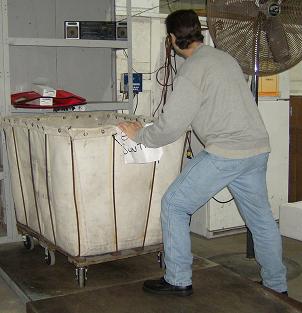


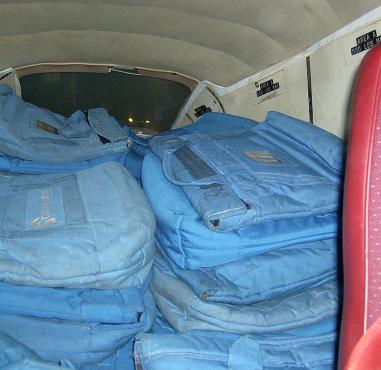


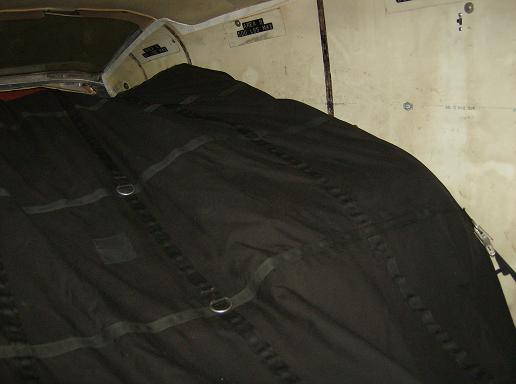



The 0536 weather at Orlando Executive Airport on Friday morning, January 19th, 2007 was one and a quarter mile visibility with a broken ceiling at 100 feet. If you've ever wondered what a night instrument takeoff looks like, well, there isn't much to photograph. Looking out the window, this is more or less what you'd see. As the pilot, of course, you aren't looking outside at all; you're scanning the flight instruments in front of you. They enable you to maintain control of the airplane and navigate.
The tower was still closed, so I called Orlando Departure Control over the radio and obtained my IFR clearance to Opa Locka through them. It was about 0541 when I began my takeoff roll and climbed away into the inky blackness above. I announced my intentions over the Orlando Executive Airport Common Traffic Advisory Frequency and then switched back over to Orlando Departure Control once airborne. They cleared me to 6,000 and gave me a vector towards the Pahokee VOR (a VHF radio navigation aid) with instructions to proceed direct once within reception range.


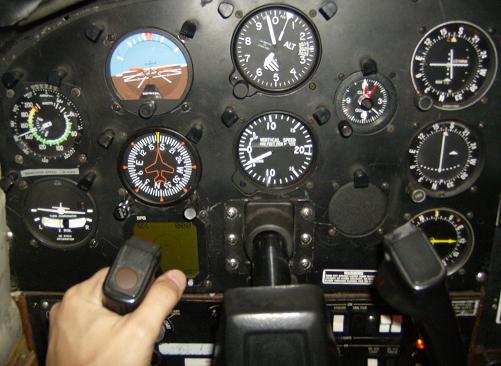
Starting my descent out of 6,000. No fancy computerized flight deck here! All you've got is the basic "six-pack" of "steam gagues."
This kind of flying (single-pilot cross-country IFR in an airplane with minimal equipment and no automation) is a tremendous technical and intellectual challenge, which many people (including myself) find quite stimulating, gratifying and enjoyable. It requires quick thinking under pressure, a light touch on the controls and the ability to visualize your position and situation amidst a dynamic and potentially confusing set of circumstances and variables. Throw in a few extra distracting factors, such as in-flight icing or the malfunction of an important system, and even an experienced and proficient pilot can rapidly become overwhelmed and task-saturated.
Moreover, even when everything goes well it can be surprisingly fatiguing, which is why the FAA imposes strict limits on scheduled flight and duty times and mandates rest requirements prior to each assignment. (See AVEG 2: On-Demand Part 135 Flight/Duty/Rest Rules for more on that.) This is definitely not "fun" flying in the sense of buzzing around casually in the local area for an hour or two on a clear VFR day, or making a quick hop over to the next town over for a "$100 hamburger."
SERIOUS ADVICE: DO NOT pursue a Part 135 flying job or embark on a course of initial Part 135 IFR-PIC ground and flight training for this type of operator unless you already have a solid foundation of recent IFR cross-country experience and your proficiency is already fairly high. That includes hand flying (no autopilot), navigating with VORs and ADFs (no GPS), shooting approaches right down to mins in actual IMC, and dealing with real en route weather (icing, thunderstorms etc.). This is not a job you should try to use to "get current" if you haven't done any instrument flying in a couple of years.


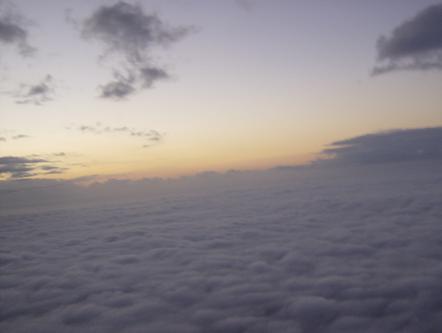
About an hour after taking off from Orlando, sunrise presented me with this view of the Palm Beach - Fort Lauderdale area. As you can see, a solid overcast layer obscured everything. Opa Locka's automated weather reporting station indicated that the ceiling over the airport was a mere 400 feet. This is very unusual for this part of south Florida. So I had to shoot the ILS approach to runway 9L to get in. It is not at all common to have to do this; visual conditions almost always exist in and around Miami, except during thunderstorms or hurricanes.


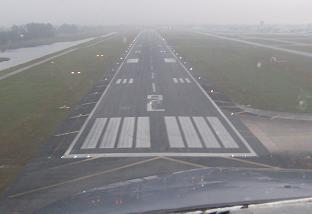


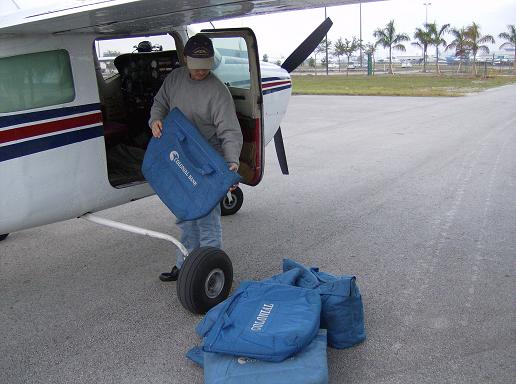





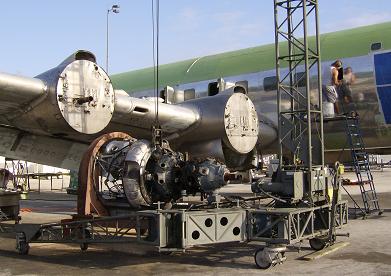
Resurrection! Technicians and laborers work to restore this beautiful old 1950 Douglas DC-7 to flying condition so they can use it for cargo runs down to Central and South America. Now that would be an interesting flying job, don't you think? It was sitting across from the flight line where my own airplane was parked for the day.


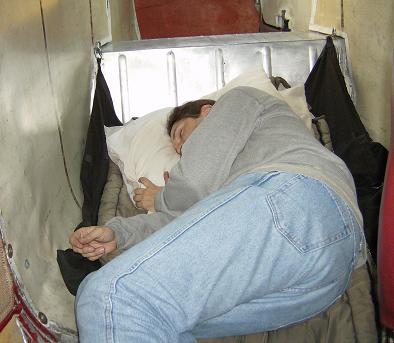


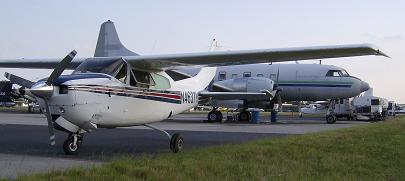


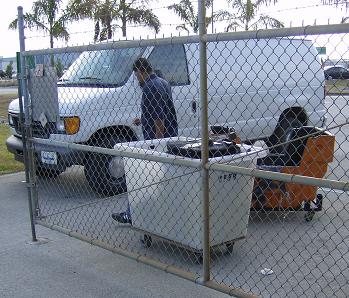


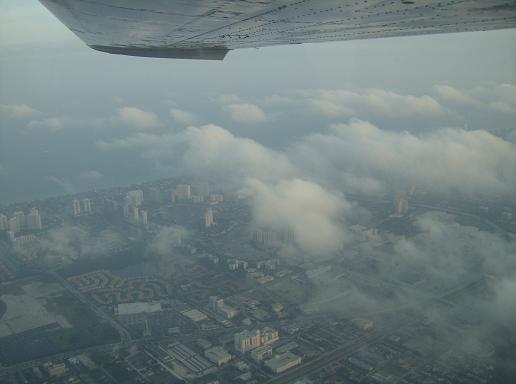








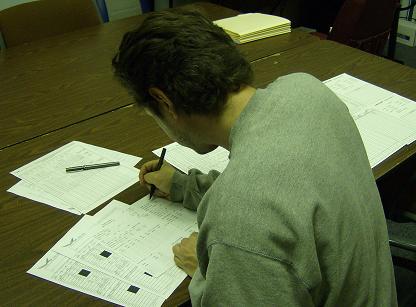
Paperwork, paperwork, paperwork. No flight is truly over until it has been legally documented half a dozen different ways. Once that was done, I was ready to go off duty. The time was 1900 -- exactly 14 hours after I had first reported at 0500.

Click HERE to return to the previous page.